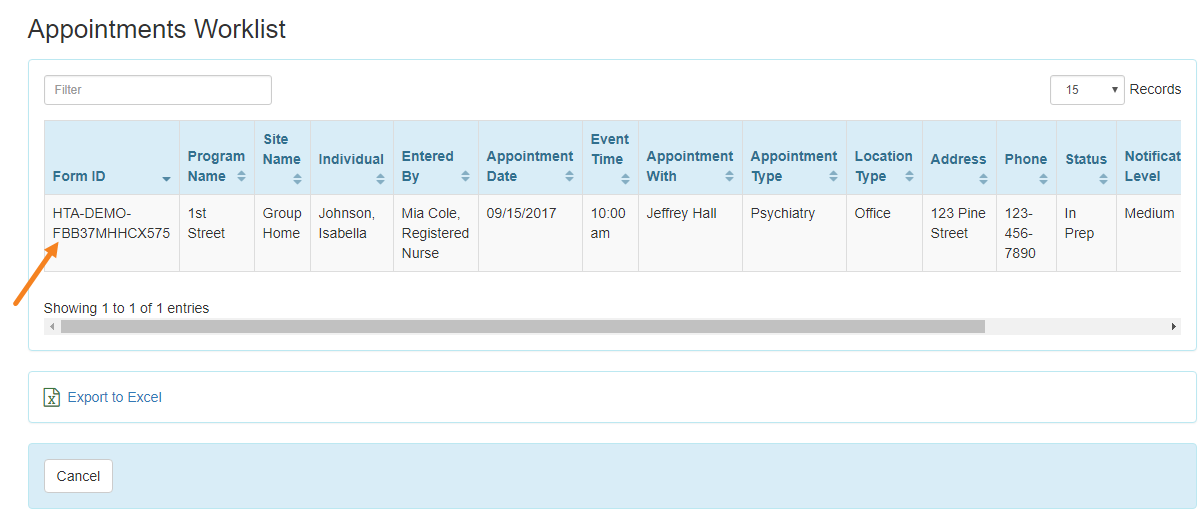
- #IMAGECAST PACS DISPLAY APPOINTMENT S I CERNER ARCHIVE#
- #IMAGECAST PACS DISPLAY APPOINTMENT S I CERNER SOFTWARE#
- #IMAGECAST PACS DISPLAY APPOINTMENT S I CERNER PROFESSIONAL#
PACS can have multiple users based on their role responsibilities. PACS administration can utilize modules to display precise statistics to the administrator, who can then use the server to send reports and image data to members of their organization. A good PACS incorporates a well-functioning administrative module and can monitor its resources, system management, memory use, and interpret the underlying databases. One of the key image functionalities that PACS is capable of is storage and administration. PACS can leverage various modules for the transition of digital images.
#IMAGECAST PACS DISPLAY APPOINTMENT S I CERNER SOFTWARE#
A technician can change the status of the images through the PACS software if necessary. Once the images are stored in the PACS server, a technician will typically verify the images and then forward them to a radiologist for examination. PACS can also be installed with a set of rules which allows health care facilities to automatically forward the images to the radiologist.

This enables radiologists to provide healthcare services while having remote access. This system acts as the forwarding mechanism and storage for patient images and orchestrates all examination alternatives. PACS manages all the patient images and pictures electronically. Once they are stored, a radiologist accesses the PACS software through their computing devices allowing them to dictate the patient’s exam.

The technician will send those digital images electronically to the PACS, where the images are stored.
#IMAGECAST PACS DISPLAY APPOINTMENT S I CERNER PROFESSIONAL#
You can think of this system as the modern and digital rendition of physically transporting film jackets and manually filing medical images around a healthcare facility.įor example, a patient comes in for a medical exam, and the medical professional prescribes an X-ray scan. PACS is a medical image management system that acquires, stores, forwards, manipulates, and displays medical images. It enables digital imaging from different sources to communicate with each other and transfer from one healthcare system to the next. DICOM programs around the healthcare facility can receive and communicate the information that each image represents.ĭigital Imaging and Communications in Medicine (DICOM) refers to the universal format in which PACS and RIS data are stored and transferred. After these images are archived, communication comes into play.
#IMAGECAST PACS DISPLAY APPOINTMENT S I CERNER ARCHIVE#
When these technologies produce digital images or pictures, healthcare professionals archive and send these images to other sections of the hospital or medical facility. It stores medical images that an X-ray machine, MRI machine, or other medical imaging modality generates. It embodies an imaging technology that helps transmit images from local or remote image acquisition sites and then securely transfers them to multiple physically disparate locations. PACS acts as a key component for the radiology department within the healthcare IT space.

PACS is an acronym that stands for Picture Archiving Communication System. This results in more efficient and cost-effective benefits in radiological healthcare diagnosis. Medical image management systems are maturing, providing access outside of the radiology department to images throughout the hospital via the Ethernet, at different hospitals, or from a home workstation if teleradiology has been implemented.PACS in Radiology allows physicians to securely store medical images for centralized retrieval. Close integration with the hospital information system (HIS)-radiology information system (RIS) is critical for system functionality. Data are secured and archived on digital media such as optical disks or tape, and may be automatically retrieved as necessary. The image data and pertinent information are transmitted to other and possibly remote locations over networks, where they may be displayed on computer workstations for soft copy viewing in multiple locations, thus permitting simultaneous consultations and almost instant reporting from radiologists at a distance. PACS is used to digitally acquire medical images from the various modalities, such as computed tomography (CT), magnetic resonance imaging (MRI), ultrasound, and digital projection radiography. Picture archiving and communication system (PACS) is a collection of technologies used to carry out digital medical imaging.


 0 kommentar(er)
0 kommentar(er)
